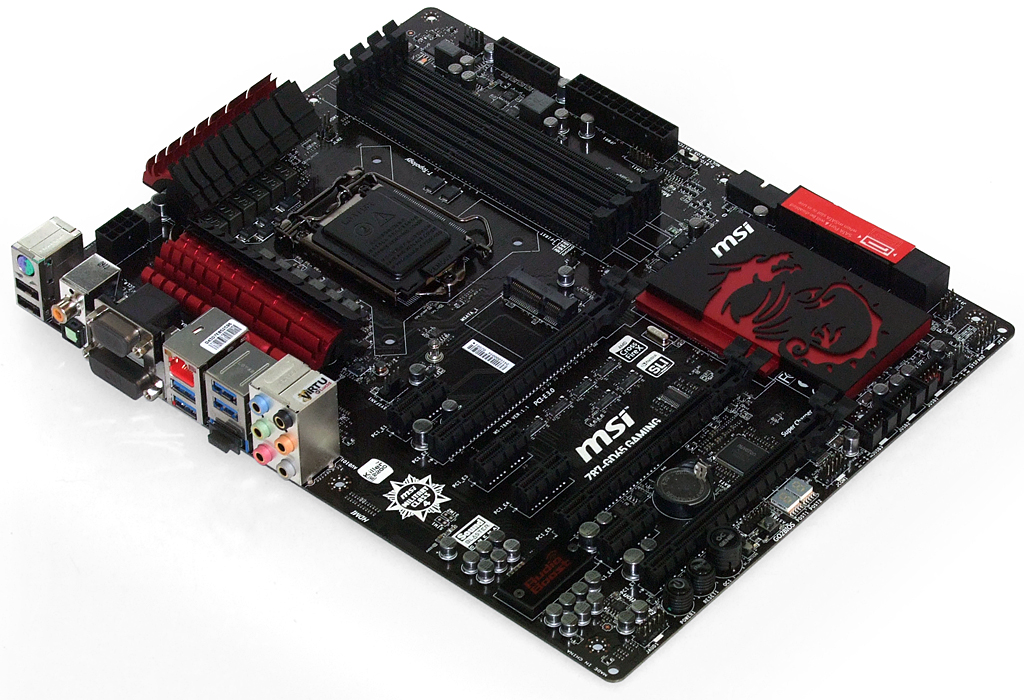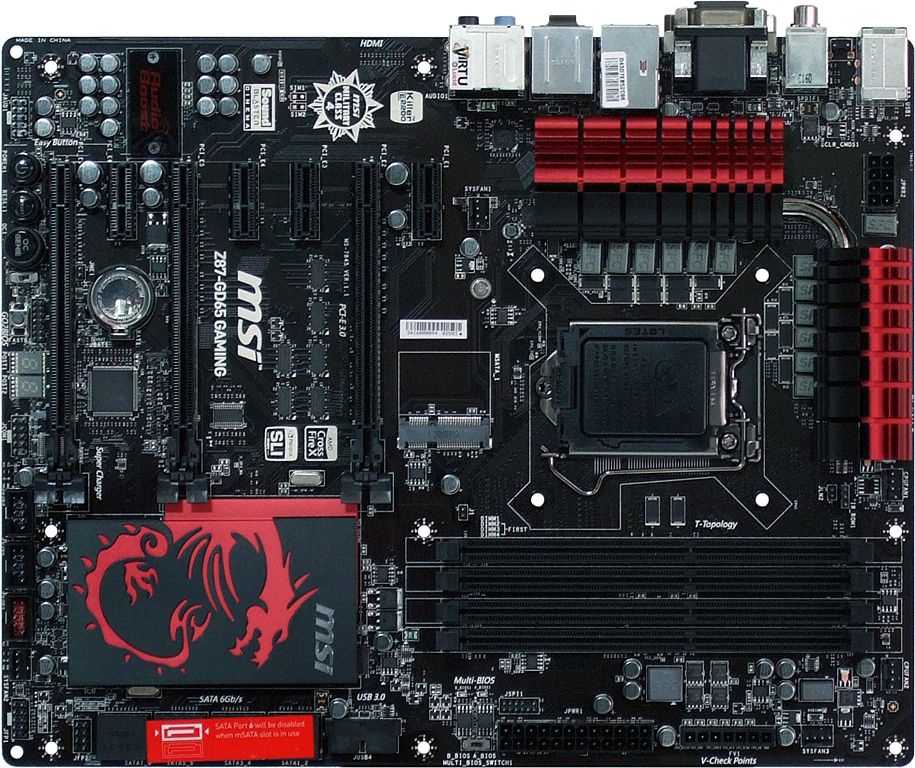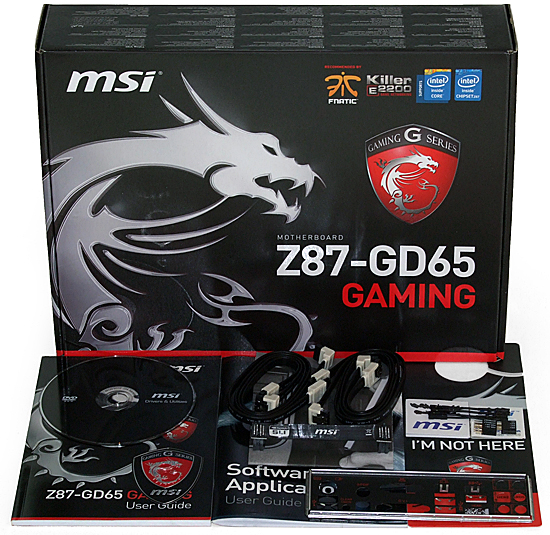Five Z87 Motherboards Under $220, Reviewed
Intel’s Haswell architecture displaces Ivy Bridge in its desktop line-up, bringing with it yet another new CPU interface. We tested six motherboards that claimed to be ready for your overclocking efforts, and included the five survivors in today’s review.
MSI Z87-GD65 Gaming
Why you can trust Tom's Hardware
Arriving at its anticipated $190 price point, MSI’s Z87-GD65 Gaming relies primarily on Intel’s feature set to create value with gaming enthusiasts. For example, four I/O-panel-based USB 3.0 ports complement a dual-port front-panel header to consume all six of the chipset's ports, without the need for added hubs or controllers.
The Z87-GD65’s I/O panel features a digital coaxial S/PDIF output—a rare find on modern motherboards—in addition to optical and HDMI audio. And speaking of HDMI, the board also adds DVI and VGA graphics outputs to this oft-used connection.
While the easy-access CLR_CMOS button is only found on the Z87-GD65’s I/O panel, on-board power and reset buttons are available on top, next to its two-digit POST code display, within easy reach for bench top testing. MSI also includes its OC Genie automatic overclocking button, a GO2BIOS button for easier firmware access, and a BIOS selector switch.
Lacking eSATA, MSI makes use of its single added SATA 6Gb/s controller by expanding internal connections to eight ports. Next to those, its USB 3.0 front-panel header also faces forward for enhanced card clearance.
Keeping with the gaming-enthusiast theme, the Z87-GD65 Gaming’s third x16-length slot borrows PCIe 3.0 lanes from the middle slot. As with its ECS and ASRock competitors, the Z87-GD65’s CPU PCIe lane configurations drop from 16-0-0 to 8-8-0 and 8-4-4 depending on the slots you populate. Four lanes might not sound impressive, but PCIe 3.0 transfers make up for the bandwidth deficit on most recent graphics cards.
Installing a slower card in the bottom slot still causes it to steal lanes from the top and middle slots, but MSI attempts to make up for that by putting a total of four PCIe 2.0 x1 slots above it. One of those slots will likely get covered up by a graphics card, but the three remaining slots are more than adequate for most builds.
The Z87-GD65 also has an mSATA slot to host tiny SSDs, connected to the Z87 Express chipset’s SATA 6Gb/s controller. Using it requires the builder to leave one of the forward-facing ports empty.
Next to the Z87-GD65’s main power connector, a row of voltage rail testing points makes it easy for fussy overclockers to find the true voltage that corresponds to their set voltage. MSI even adds a set of output wires to its installation kit to expand this feature’s appeal.
This motherboard's one layout issue is a front-panel audio connector that, by being in the bottom-rear corner, is too far away from the slightly short cables of some cases. Moreover, MSI’s audio header placement follows a 1997 tradition that’s often hard to break.
The Z87-GD65 Gaming includes four SATA cables, a set of voltage monitor leads, a flexible SLI bridge, a pair of cable-bundling header extenders, a “go away” door tag, and a very large and shiny case badge.
Current page: MSI Z87-GD65 Gaming
Prev Page Z87X-UD4H Applications Next Page Z87-GD65 Gaming FirmwareGet Tom's Hardware's best news and in-depth reviews, straight to your inbox.
-
Someone Somewhere Who did you get the CPU from? Given the Haswell launch article said they were unlikely to be able to hit 4.5GHz+, is this a cherry-picked chip from Intel?Reply
Could we see some MBs around the $130-$140 mark? They're the interesting ones IMO, and would toast most of these in terms of value. -
Crashman Reply
Intel says it doesn't cherry-pick chips for reviewers...10911132 said:Who did you get the CPU from? Given the Haswell launch article said they were unlikely to be able to hit 4.5GHz+, is this a cherry-picked chip from Intel?
-
Memnarchon Thank you. I was looking forward for a review like this. I read some reviews and the o/c was varying from mobo to mobo lot. So if the same cpu was used, 4,3Ghz to 4,7Ghz is a lot of difference. Because if your cpu would o/c to 4,3Ghz most we would tell its a crap sample Haswell sucks on o/c etc etc, but if it was be able to clock to 4,7Ghz we would say its a nice sample.Reply -
cangelini Reply
Yes, the CPU comes from Intel. Almost certainly it was cherry-picked. But this is why we didn't rely on these CPUs for our launch coverage--it makes a lot more sense to go to a source with hundreds of boxed processors on the bench to get a real sense for what Haswell will do in the wild. At least for this round-up, the variable changing is the motherboard. So, we derive as much meaning as possible with a review sample that hits 4.7 GHz on one board and 4.5 GHz on another.10911132 said:Who did you get the CPU from? Given the Haswell launch article said they were unlikely to be able to hit 4.5GHz+, is this a cherry-picked chip from Intel?
Could we see some MBs around the $130-$140 mark? They're the interesting ones IMO, and would toast most of these in terms of value.
-
Someone Somewhere Yeah - but if people think that their chip is going to hit 4.7 on a good board, then find they can't get 4.5, they can be upset.Reply
OTOH, the launch coverage said that was at 1.2V, while this is 1.3V, so I guess a few hundred MHz extra is reasonable.
Lot more variation than on IB's review: http://media.bestofmicro.com/X/O/335580/original/image019.png -
JOSHSKORN Isn't there a flaw in the Z87 technology regarding sleep mode? Was it mentioned in the article? I didn't see it.Reply -
Jason Louie do these board suffer from the rumoured usb3 sleep issue? or are they the fixed B3 steppings ?Reply -
Crashman Reply
Did you read the Haswell review? All current boards are affected, no future boards will be, there's nothing to update here, and the flaw is virtually meaningless.10911218 said:Isn't there a flaw in the Z87 technology regarding sleep mode? Was it mentioned in the article? I didn't see it.
http://www.tomshardware.com/reviews/core-i7-4770k-haswell-review,3521-9.html
If you have one of the affected drives and can't be bothered to reconnect it when it goes offline, wait a couple weeks and buy a board from the new batch.
The differences between boards in today's review are overclocking, power consumption, and onboard features. None of those things will change with the new PCH batch, and firmware updates should improve both batches equally.
-
Jason Louie do these board suffer from the rumoured usb3 sleep issue? or are they the fixed B3 steppings ?Reply -
sna Hello,Reply
Can you guys please test 6 SSD in Raid 0 on these mobos ? this is the only Advantage of upgrading to a Haswell over ivy/sandy bridge.



